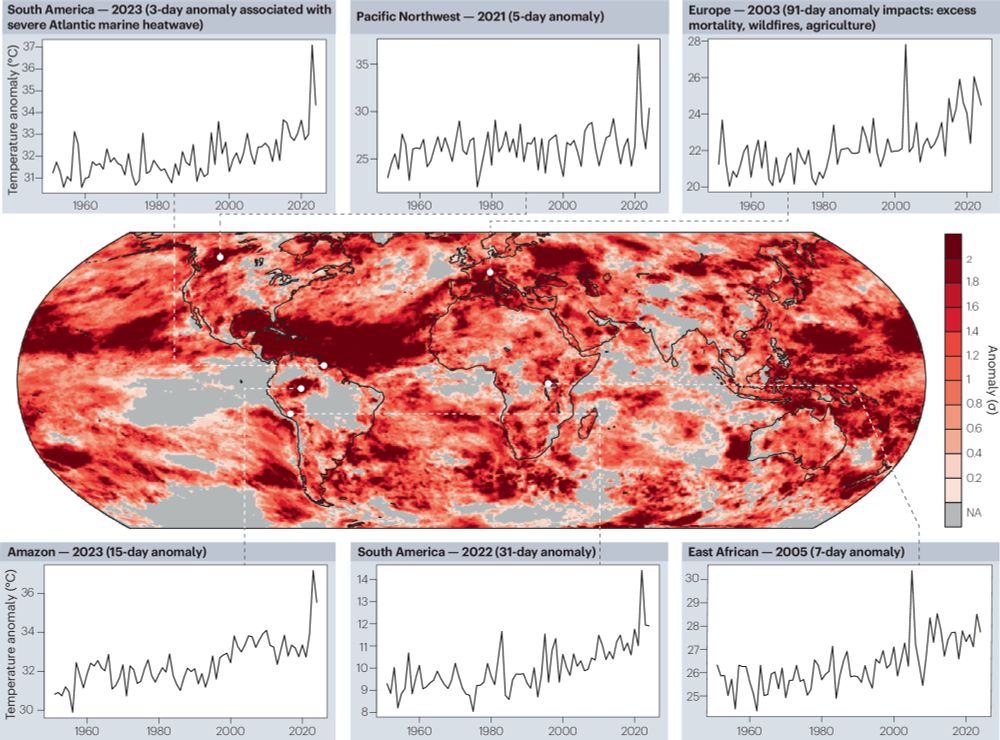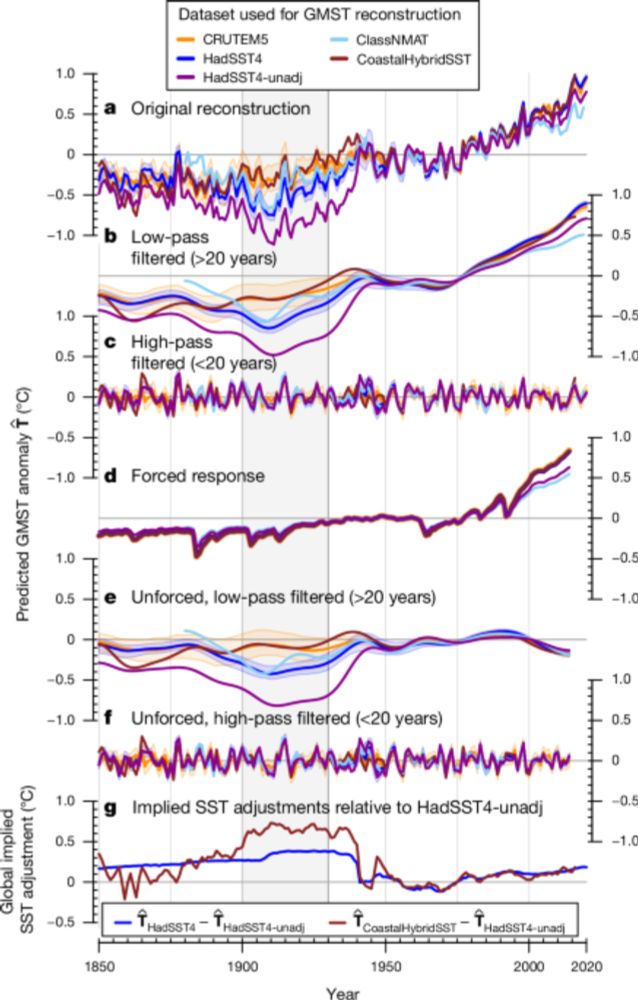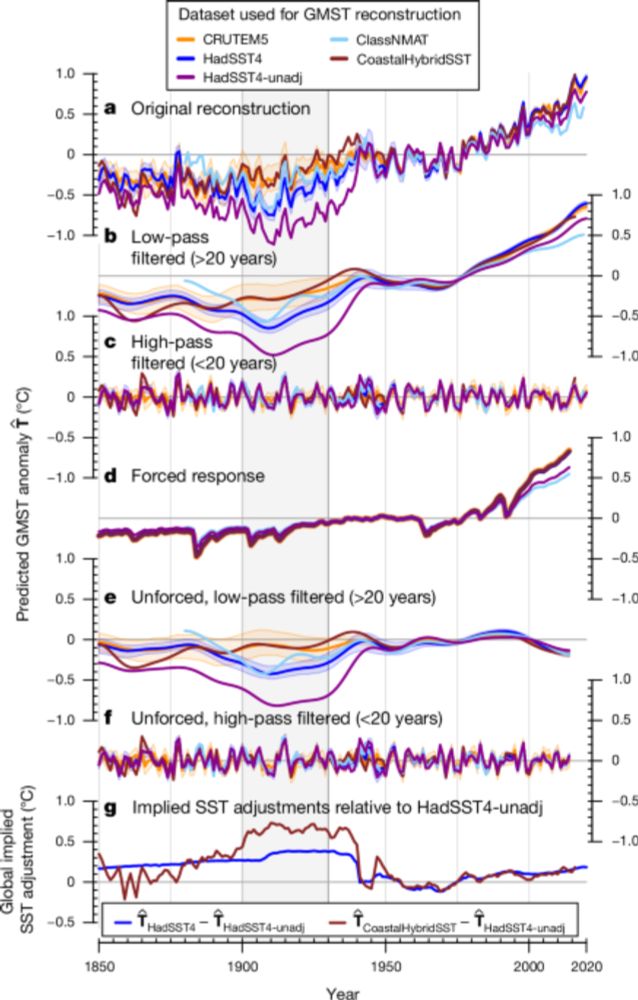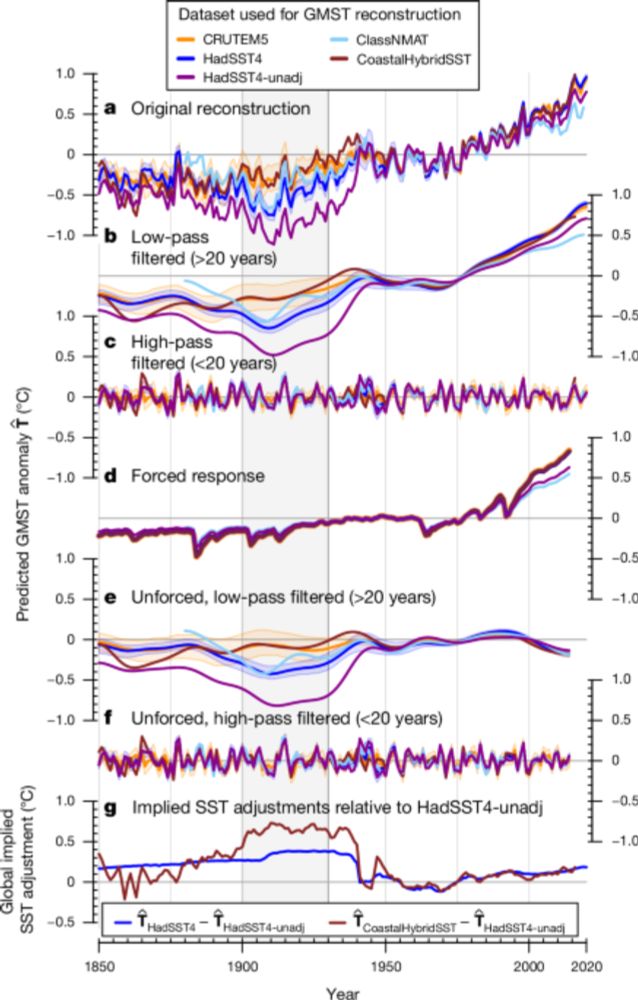
Understanding past climate events and trends to constrain near-future climate risk
The global mean surface temperature record —combining sea surface and near-surface air data— is central to understanding climate variability and change.
🚀 New season: AI for Good Webinar Series 𝗙𝗿𝗼𝗺 𝗠𝗼𝗹𝗲𝗰𝘂𝗹𝗲𝘀 𝘁𝗼 𝗠𝗼𝗱𝗲𝗹𝘀 - starting TODAY!
@sebastian-sippel.bsky.social (Leipzig University) discusses how past climate events inform future climate risks.
📅 Oct 1st
🕓 17:00-18:00 CEST
Sign-up: aiforgood.itu.int/event/unders...
01.10.2025 12:02 — 👍 6 🔁 1 💬 0 📌 0
Es ist eine grosse Ehre, den 2025 Deutschen Umweltpreis zu erhalten! Danke an alle meine jetzigen und ehemaligen Gruppenmitglieder und viele Kolleg:innen!
@lukasgudmundsson.bsky.social @yasserhaddad.bsky.social @yannquilcaille.bsky.social @michaelgwindisch.bsky.social @usyseth.bsky.social
12.09.2025 07:18 — 👍 84 🔁 13 💬 8 📌 5


Hosted by @meteoleipzig.bsky.social @unileipzig.bsky.social @tropos-de.bsky.social , ECO-N research training group funded by @dfg.de
Great lectures by @sebastian-sippel.bsky.social @frediotto.bsky.social @mdebrito.bsky.social @zscheischlerjak.bsky.social and more!
04.09.2025 09:06 — 👍 12 🔁 5 💬 0 📌 0
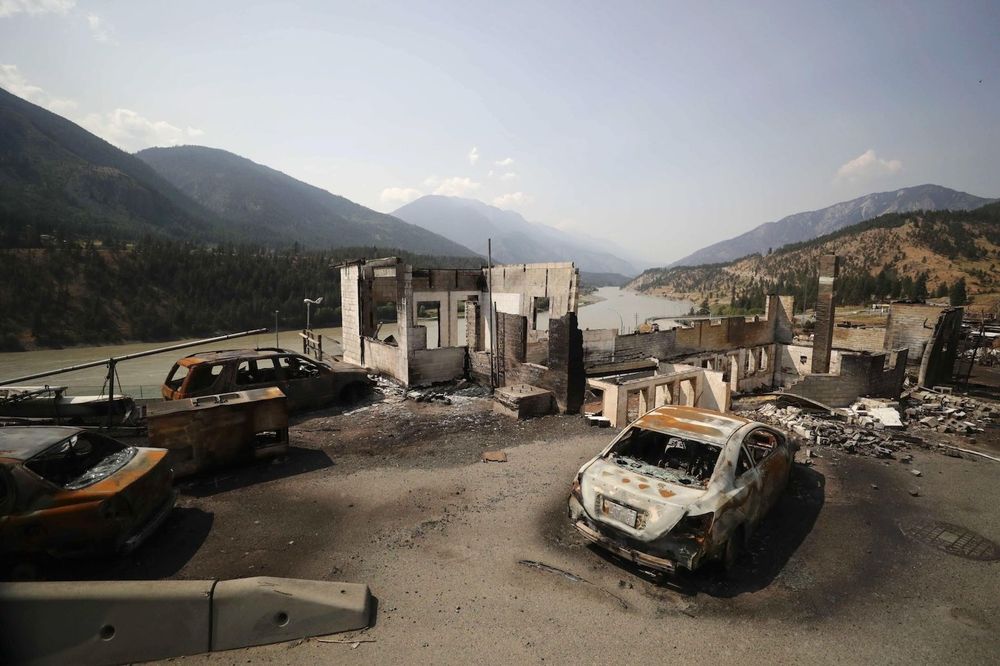
NEW – Guest post: How climate change is fuelling record-breaking extreme weather | @erichfischer.bsky.social
Read here: buff.ly/bnrSvQN
13.06.2025 10:00 — 👍 16 🔁 14 💬 2 📌 4
High warming rate fuels record-breaking weather
The longer our measurements, the fewer record-breaking events we should observe.
The opposite is the case - many more records and higher record margins
I summarise the key takeaways of our @natrevearthenviron.nature.com article in a guest post.
13.06.2025 10:40 — 👍 14 🔁 7 💬 1 📌 0
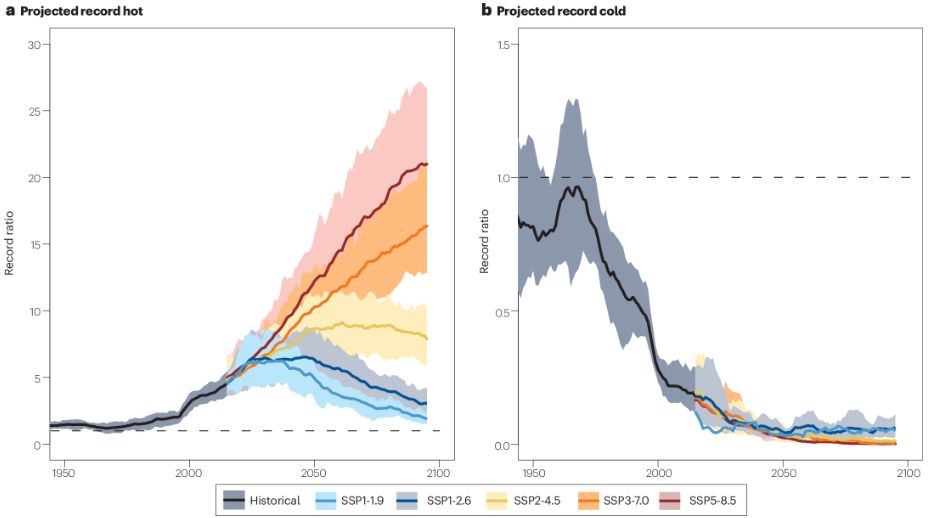
🚨New Review!
'Record-breaking extremes in a warming climate'
By @erichfischer.bsky.social, @sebastian-sippel.bsky.social et al.
www.nature.com/articles/s43...
02.06.2025 13:40 — 👍 23 🔁 7 💬 0 📌 0
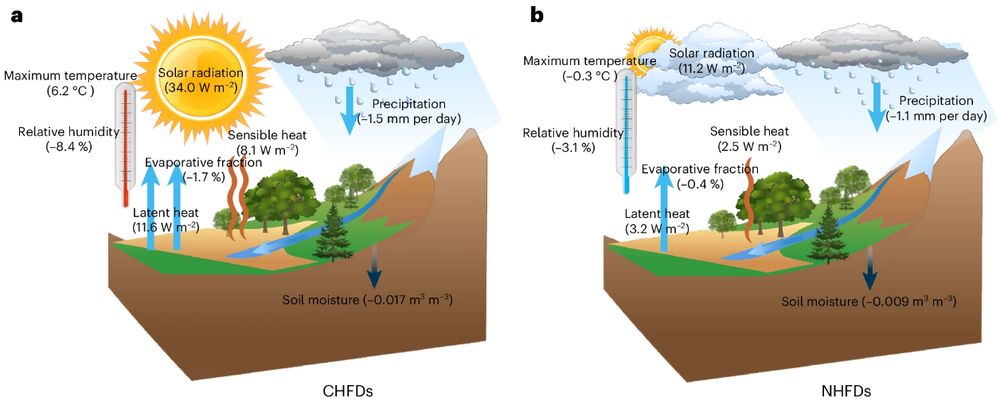
Schematic illustrations of the onset mechanisms of compound heat flash droughts and non-heat flash droughts
⚒️ Article: Flash droughts that are accompanied by extreme heat drive more severe and prolonged impacts on global ecosystems
@erichfischer.bsky.social @ethz.ch @louiseslater.bsky.social @sebastian-sippel.bsky.social @retoknutti.bsky.social
www.nature.com/articles/s41...
02.06.2025 15:00 — 👍 17 🔁 6 💬 1 📌 0
https://metsoc.jp/jmsj/EOR/2025-002.pdf
5/4 p.s: The new paper by Ishii and colleagues (t.co/YeCrlimA3N) also highlights the sudden changes in NMAT (HadNMAT2 vs. CRUTEM5) around the mid-1910s in their Figure 3.
09.12.2024 14:58 — 👍 0 🔁 0 💬 0 📌 0
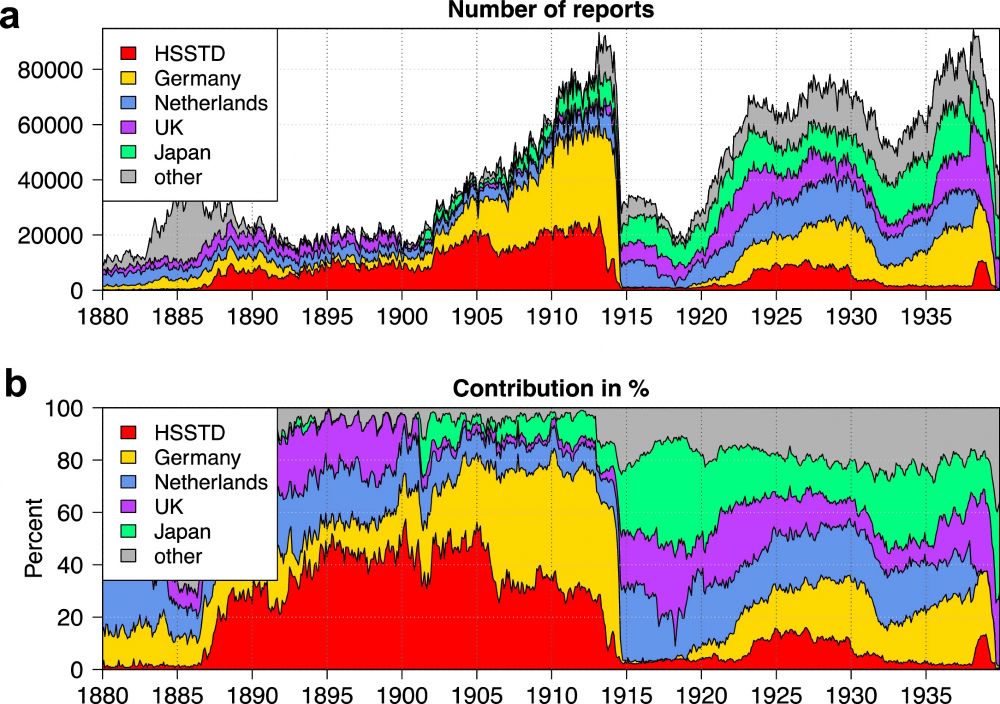
4/4 The year 1914 is characterised by a strong El-Nino (the uptick is seen consistently in land, SST and NMAT temperatures), the start of WWI and a sudden change in data sources (figure 2 below). Whether any of those events is responsible for the NMAT changes during this time, remains to be seen.
09.12.2024 14:58 — 👍 0 🔁 0 💬 1 📌 0
3/4 So it is crucial to better understand the NMAT puzzle piece, as the evidence that comes from ClassNMAT from the perspective of the GMST reconstructions from land vs. ocean is rather split for the 1900-1930 period. It may tell us something important about the ~1900s (1900-1913) vs. 1914 onwards.
09.12.2024 14:58 — 👍 0 🔁 0 💬 1 📌 0
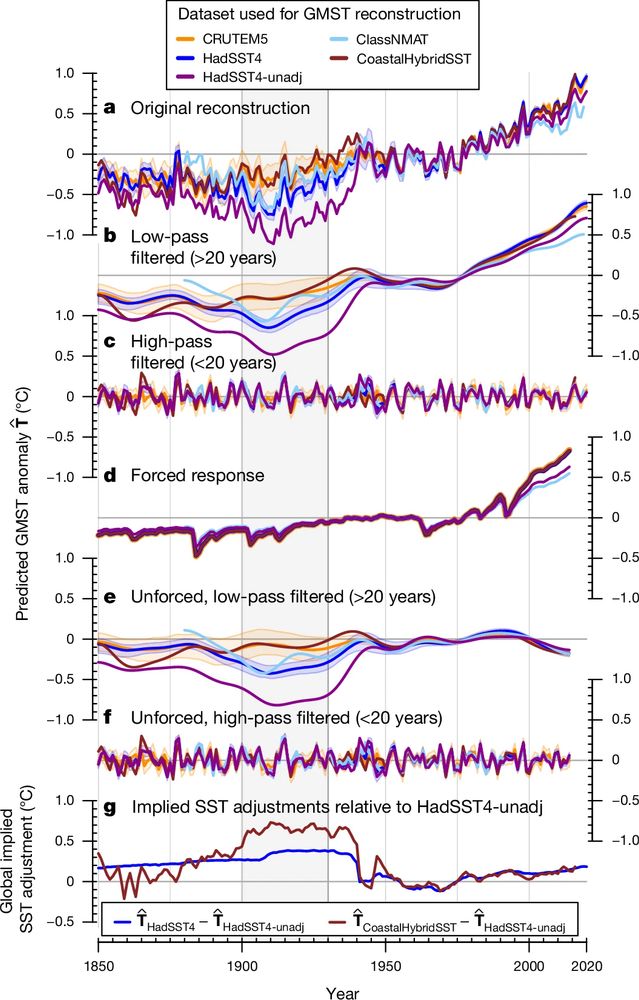
2/4 The result is puzzling (figure 1 below, ClassNMAT seen in panel a and b): GMST based on NMATs is indeed *very* cold in the 1900s, following the SST-based GMST time series up until 1913. Yet, from 1914 onwards, the NMAT-based reconstruction is close(r) to the LSAT-based reconstruction...
09.12.2024 14:58 — 👍 0 🔁 0 💬 1 📌 0
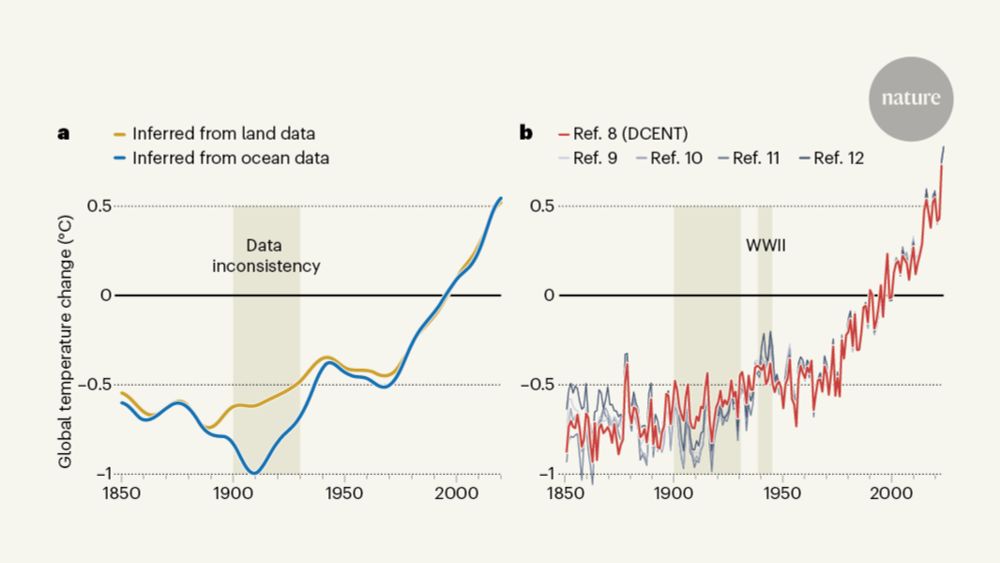
Revised historical record sharpens perspective on global warming
Undercorrection of ocean surface temperatures revealed.
1/4 Thanks for sharing your reflections! fascinating to read the more personal take behind the nice News&Views piece (www.nature.com/articles/d41...).
Just one after-thought on night marine air temperatures (NMAT). NMATs are a crucial puzzle piece, and we ran a GMST reconstruction for ClassNMAT:
09.12.2024 14:58 — 👍 2 🔁 1 💬 1 📌 0
very interesting project! I'm looking forward to learn about the results...
05.12.2024 10:26 — 👍 1 🔁 0 💬 0 📌 0
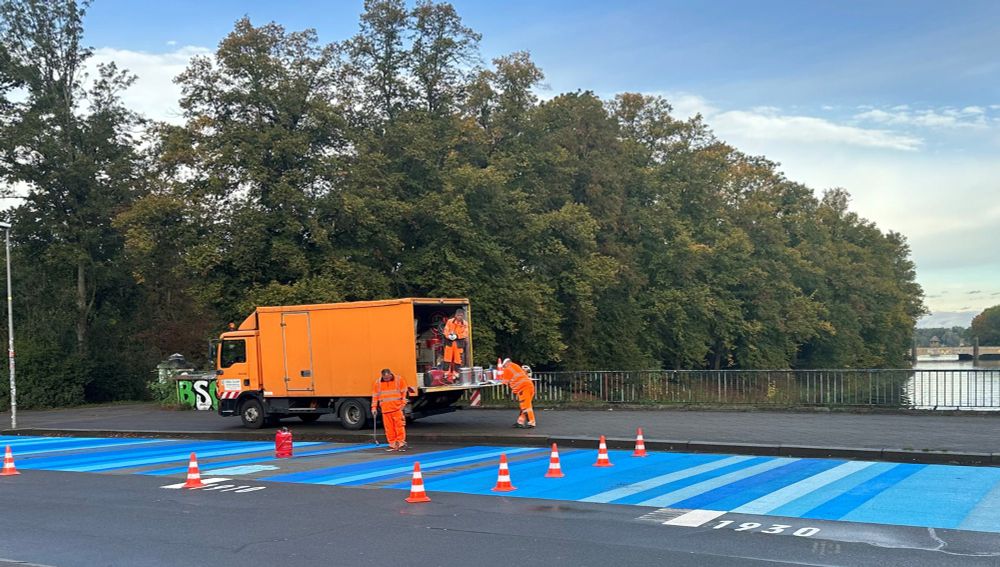
Redrawing the global warming stripes.
In a new paper led by Sebastian Sippel published in Nature today, we show that the early 20th century global ocean surface temperatures and thereby global mean surface temperature were warmer than previously thought.
Thread... (1/13)
20.11.2024 16:13 — 👍 248 🔁 78 💬 7 📌 18
interesting discussion! i've been thinking along similar lines - sea level pressure, precipitation or even sea level height measurements at the time could give very interesting constraints...
03.12.2024 16:35 — 👍 0 🔁 0 💬 0 📌 0
Professor of Cognitive Science, University of Bristol. Homepage: https://www.lewan.uk
Associate Director of Policy & Campaigns @350.org
Co-board chair TogetherForFuture
Climate, Energy, Geopolitics
Views = my own
Climatologist & Weather Historian.
www.mherrera.org/temp.htm
https://en.wikipedia.org/wiki/User:Maxcrc
Weather news. Climatic statistics and records. By M. Herrera
@extremetemps in all networks
Official UK Met Office account. Get the weather in your hand with our app: http://linktr.ee/MOContent
Toward a Climate-Smart Nation. The official NOAA account for Climate.gov hosted by the Climate Program Office. Follow for #climate news, #science, #data, resources, and more!
Explaining and Predicting Climate Changes and Extremes - Horizon Europe Research Project
www.expect-project.eu
PhD Student at Barcelona Supercomputing Center
Climate scientist modelling extreme events in a changing climate, Associate Professor @vubrussel.bsky.social. Previously research fellow @kuleuvenuniversity.bsky.social and @ethz.ch. Website: https://sites.google.com/site/wimthiery/
Climate scientist, professor of Physics of the Oceans in Potsdam. Opinions my own.
Unabhängiger Journalismus. 100+ AutorInnen, eine Genossenschaft. Fokus auf Umwelt, Wissenschaft, Internationales, Gesellschaft. Überzeugungstäter. Werbefrei. Powered by Riff-Supporters via Abo. https://www.riffreporter.de/de
Die DFG ist die größte Forschungsförderorganisation und die Selbstverwaltungsorganisation der Wissenschaft in Deutschland.
www.dfg.de
Impressum: https://www.dfg.de/de/service/kontakt/impressum
Social Media-Netiquette: https://www.dfg.de/de/service/presse
Chemist, blogger and science journalist. Physical sciences editor for Spektrum der Wissenschaft.
Writes about chemistry, infectious diseases, earth sciences, disasters and quokkas.
Posts in english and german.
Der Account @kachelmann auf Blue Sky ist Fake.
Ich nicht.
Gegen Rechts und Schwurbel aller Art. Für Wissenschaft und einen Mindestlohn, von dem man leben kann.
Spalten statt versöhnen. Was war? Das https://t.co/XHuyxVQYfW
Award-winning science communicator, bestselling author, TV personality & co-founder of Scientists for XR - making STEM fun, fighting misinformation & advocating for diversity.
AuDHD, she/her
2x TEDx speaker, 4x cat lover
www.emilygrossman.co.uk
Naturwissenschaftler (Polymerchemie). Hochschullehrer (Physikalische Chemie). Im dynamischen Nichtgleichgewicht.
Das deutschsprachige @RealScientists.
Echte Wissenschaft von echten ForscherInnen, AutorInnen, KommunikatorInnen, KünstlerInnen... Diese Woche: @vicgrinberg.mastodon.social.ap.brid.gy
Wollte immer Historiker werden, ich arbeite dran:"Seltsam,im Nebel zu wandern!/Leben ist Einsamsein."
https://ellis-jena.eu is developing+applying #AI #ML in #earth system, #climate & #environmental research.
Partner: @uni-jena.de, https://bgc-jena.mpg.de/en, @dlr-spaceagency.bsky.social, @carlzeissstiftung.bsky.social, https://aiforgood.itu.int
Climate Scientist at @climatecentral.org | PhD | Passionate about improving science communication through data-driven stories | Harrisburg, PA | https://zacklabe.com/
Views, thoughts, and opinions expressed here are only my own.







